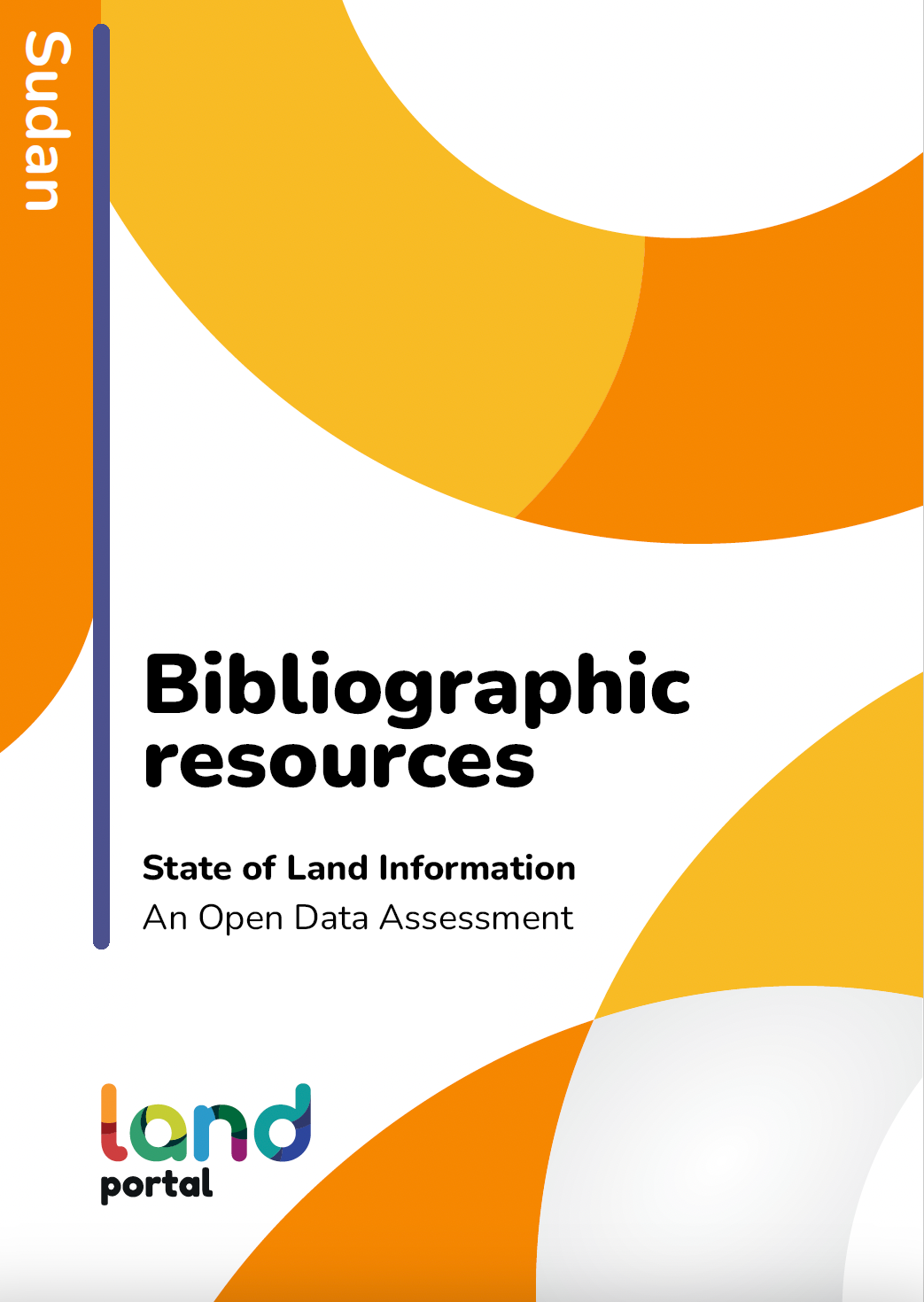Land Issues and Peace in Sudan
Resource information
Resource Language
With an area of one million square miles, the Sudan is the largest African country. Its natural resources are numerous and plenty: different climatic zones, extensive productive soils, generally flat topography and perennial and seasonal sources of surface water and under-ground water aquifers. Away from the Nile rainfall is the critical factor in the northern third of the country where there are no other sources of water.
The Sudan is predominantly rural in economy, social structures and relations, and culture. The national average population density is about 32 persons per square mile, and it is less for rural areas. Significant population redistribution has occurred because of the socially and geographically unbalanced form of development, wars and armed conflicts, drought and desertification, causing severe pressure in some areas. Generally, the resource-base can be well supportive of the human and animal populations if its potential productivity could be enhanced through equitable and sustainable land use planning and efficient management.
Of all natural resources land is of paramount significance to rural communities. It is much more than a physical resource supportive of the physical survival or reproduction of the community; it is also an embodiment of emotions, meanings and symbols of tribal affiliation, ethnicity, homeland and social relations. Inaccessibility to land is a loss of this whole ensemble. Land, as such perceived by rural communities, has long been accessible to and useable by such communities in accordance with local traditions and customary laws which are dynamic enough to take into account and to suit local specialities. These include expansion of unproductive land because of desert encroachment, unreliability of rainfall, increased animal and human populations, weakened native administration, shifting cultivation and ownership of Gum - Arabic, and the common use of grazing land, animal routes and water points by pastoralists.
The on-going active capitalist transformative processes have gone a long way on changing or modifying the social relations of production, values, structures and the traditional livelihood systems, particularly land tenure. Land has become a commodity, a mechanism of socioeconomic differentiation, and a cause of poverty and conflict. Land issues should therefore be addressed in a wider socioeconomic, political, cultural, judicial, and institutional context if resource-based conflicts are to be effectively dealt with. The piece by piece approach for the settlement of individual conflicts has proven to be ineffective since conflicts continued to recur at a higher frequency such as in Darfur. Elimination of conflicts and sustainability of social peace requires, in addition to land tenure reform, sustainability of natural resources, elimination of poverty and injustice, good governance, and respect for human rights, civic liberties and personal freedom.
The endorsement of Nivasha Agreement, the Comprehensive Peace Agreement (CPA) and the Interim Period Constitution have created a new reality, and opened up wide opportunities to reform the various land-related legislations, policies, structures and institutions. The genuine implementation of these documents and the concomitant land related reforms can be conducive to the elimination, or at least serious amelioration, of poverty, grievances, marginalization and resource-based conflicts. Inclusive participation including all stakeholders, civil society organizations (SCOs) and other community based organizations (CBOs) in legislation, policy making, implementation and monitoring is instrumental in the realization of such reforms.
Publisher(s)
Geographical focus

